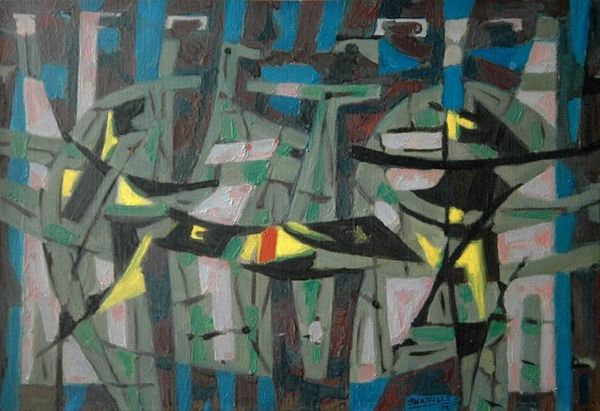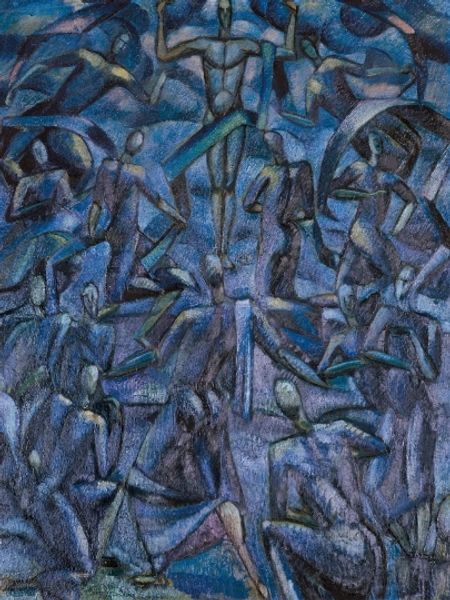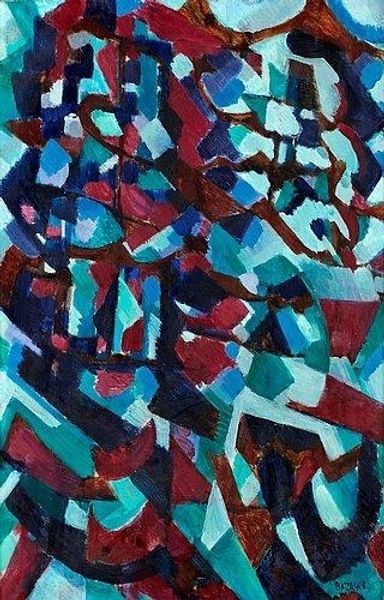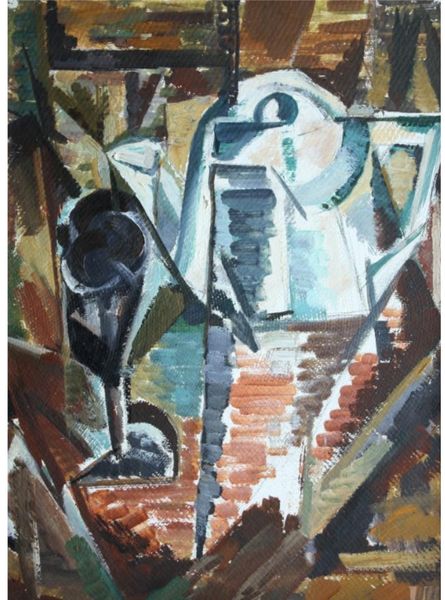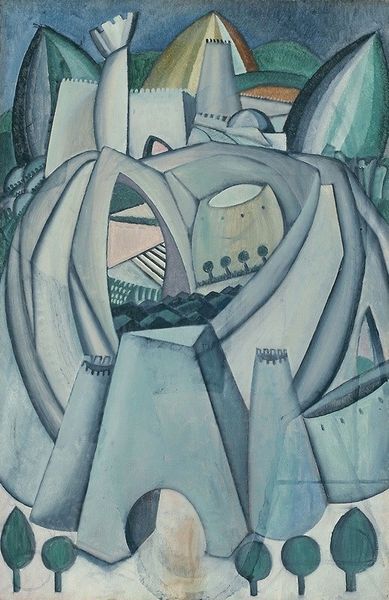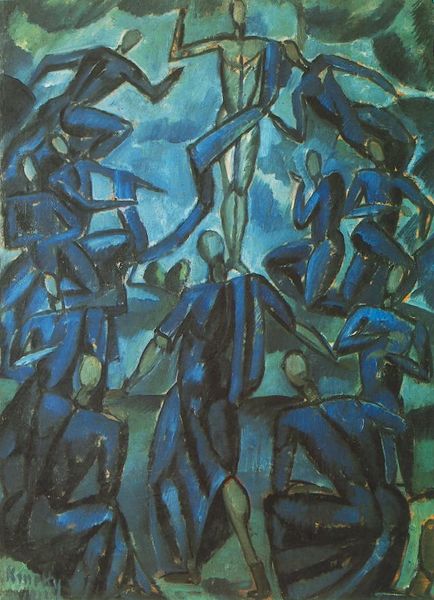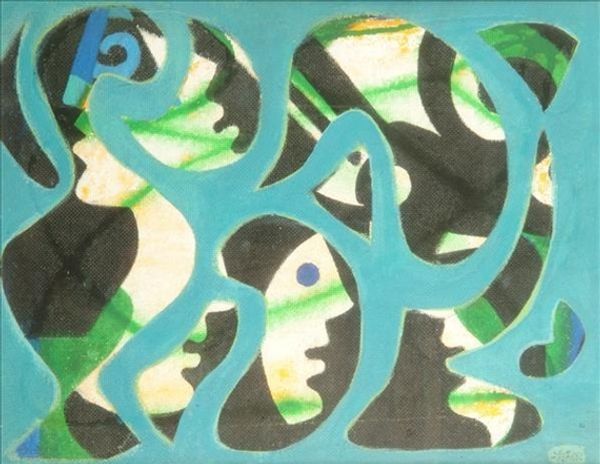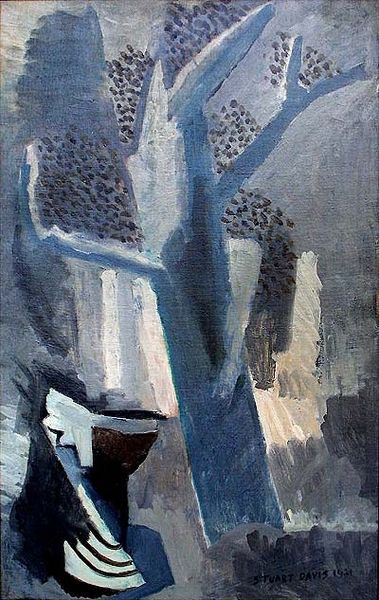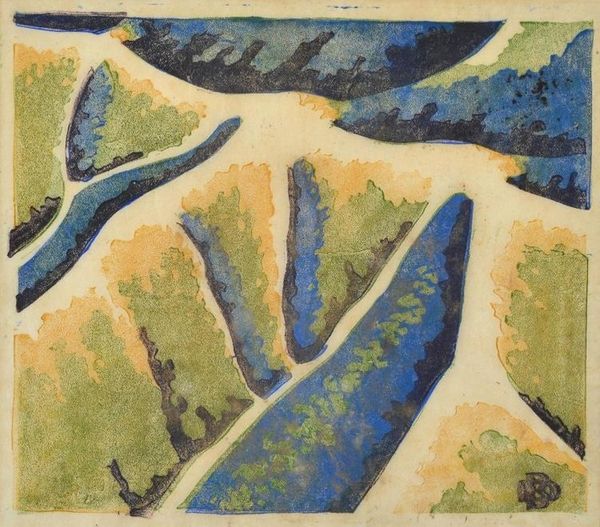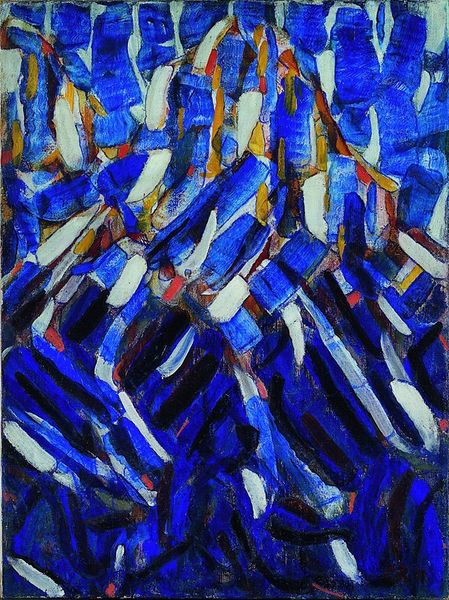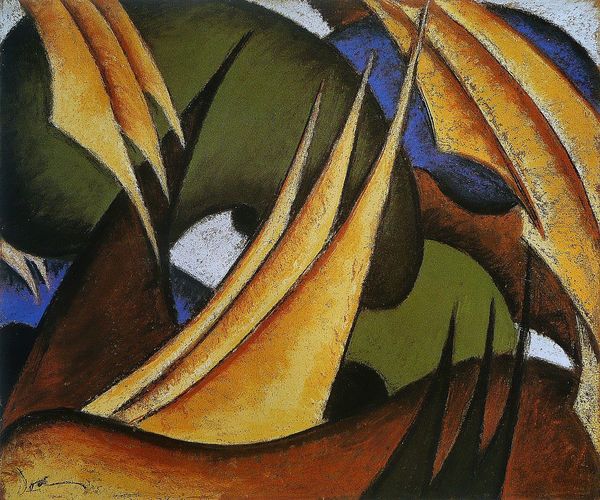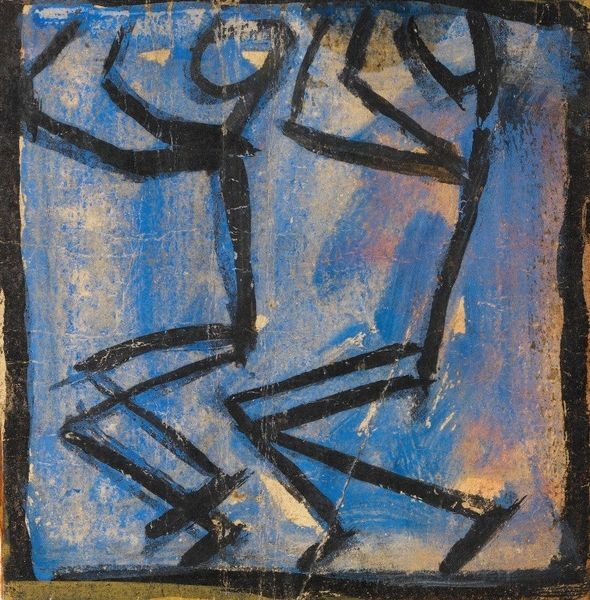
painting, oil-paint
#
painting
#
oil-paint
#
pattern
#
landscape
#
geometric
#
expressionism
#
abstract-art
#
abstract art
#
expressionist
Copyright: Public domain
Curator: Well, here we are in front of Josef Capek's painting "Les," created in 1912. It's oil on canvas. Editor: First impression? Bracing. Like a sharp intake of winter air. The geometric forms, those cool blues and blacks—it’s a forest distilled down to its most essential, frigid components. Curator: I see that. Capek was definitely exploring the raw emotional power of form. It's almost as if he's deconstructing a traditional landscape, right? Exposing its bones, finding its internal rhythms? Editor: Precisely. Note how the composition denies any illusion of depth. The artist reduces nature to overlapping shapes. Trees become angular wedges, the sky a dense, textured mass pressing down. The materiality of the paint, roughly applied, adds another layer, pushing it further from naturalism. It’s not a window onto the world, but a constructed surface, asserting its own reality. Curator: Absolutely. There’s a kind of wildness, a freedom, in that reduction, you know? He’s not trying to replicate what he sees, he’s trying to convey something he *feels*—the underlying structure of the woods, that stark and simplified energy that resonates through them. He's chopping down sentimentality to expose the elemental spirit, perhaps? Editor: Yes. It is a pre-Cubist landscape, but in my view it expresses raw emotive experience with the formal language. Think of Cezanne’s cubes and cylinders. Capek goes further; by creating ambiguity, and removing much natural detail, his visual syntax becomes more potent in conveying ideas of desolation or bleakness. Curator: What I love is that ambiguity, too. It feels… unfinished, open. As if the viewer is invited to complete the experience. Does the chill come from the abstracted trees or our collective understanding about humanity’s despoiling activities that can destroy a forest, what remains for us to do? Capek puts the onus on the witness to find their personal truth among these stylized shapes. Editor: Indeed, we confront the architecture of feeling, not the specifics of flora. Curator: It offers a lesson, that simplicity and emotion—they dance close together, yes? Editor: Right—by showing so little, Capek urges us to feel a lot. A beautiful demonstration of how reduction can amplify the emotional impact.
Comments
No comments
Be the first to comment and join the conversation on the ultimate creative platform.
